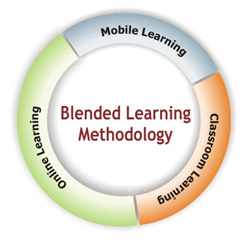A teacher or trainer with a clear and complete plan is likely to succeed. Good planning requires me to think deeply about what students need and how I can help them meet their own goals. My approach to planning is based on winning an OSCAR: objectives, system, content, arrangement, and review—all at the service of my students. [Note: In this post, I make no distinction between the terms “teacher” or “students,” preferred by academics, and the terms “trainer” or “participants,” preferred by businesspeople, because the planning I describe here is imperative and similar in either context.]
Objective – I set goals for students to meet these five criteria:
 |
| Image by Christopher McCarthy |
Objective – I set goals for students to meet these five criteria:
- Actionable – The objective must be a do (e.g., write, revise, create), not a know (e.g., learn, understand, know), so that students can prove by example that they have learned.
- Attainable – The objective should be realistic, one that the students can achieve during the course. Attaining this goal increases the likelihood that they will replicate it back at their office or home.
- Challenging – The objective should also make students stretch themselves, as writing success comes from hard work. The more challenging the task, the greater the sense of accomplishment.
- Assessable – The objective needs to be measurable; therefore, the task needs to be specific (e.g., separate ten sentences into three paragraphs in a logical order, each starting with the main point).
- Applicable – Whatever I teach has to be relevant to why students are there. Since most of my teaching is to corporate employees, I try to use actual examples of student work-related writing samples.
System – Being flexible in the class means being prepared with different ways of teaching a point, even if I don’t need to use those different methods. My system should include a good mix of lecture, class discussion, individual work, and teamwork. Also blended learning comes into play. When feasible, I provide in-class, coaching, and online learning opportunities, both synchronous and asynchronous, before, during, and after the course.
Content – I choose content not based on what I know but on what my students need to know. This means that I need to profile the learners to the extent that I can. Why are they coming to the class? What do they know? What do they want to learn? How can they use it on the job? Depending on the answers to those questions, I select from my library the most relevant content and research additional useful material.
Arrangement – The material needs to evolve in a way that helps learners build on previous learning. I sequence the course content to help students handle increasingly challenging situations. In general, I teach a point, let them practice, debrief on the point, and transition into a related more complex point.
Review – Activities must include many opportunities for students to practice what they are learning. We learn to write by writing not just by listening and speaking. In planning the course timing, I aim for at least a 50-50 split between lecture/discussion and individual writing/team review assignments. I also allow time for questions about related material that may not be in the course content. If it’s related, I should address it during the class; if it is not, I should address it during the break or after the class. Finally, I reflect on contingencies. If running ahead of schedule because of fewer questions, I reemphasize content through additional practice opportunities; if running behind schedule because of more questions, I determine what content I can de-emphasize without missing a vital teaching point.
With those five guiding principles, OSCAR, I know I will leave nothing out, I will deliver to my audience something of value, and I will address their concerns as the course progresses.
